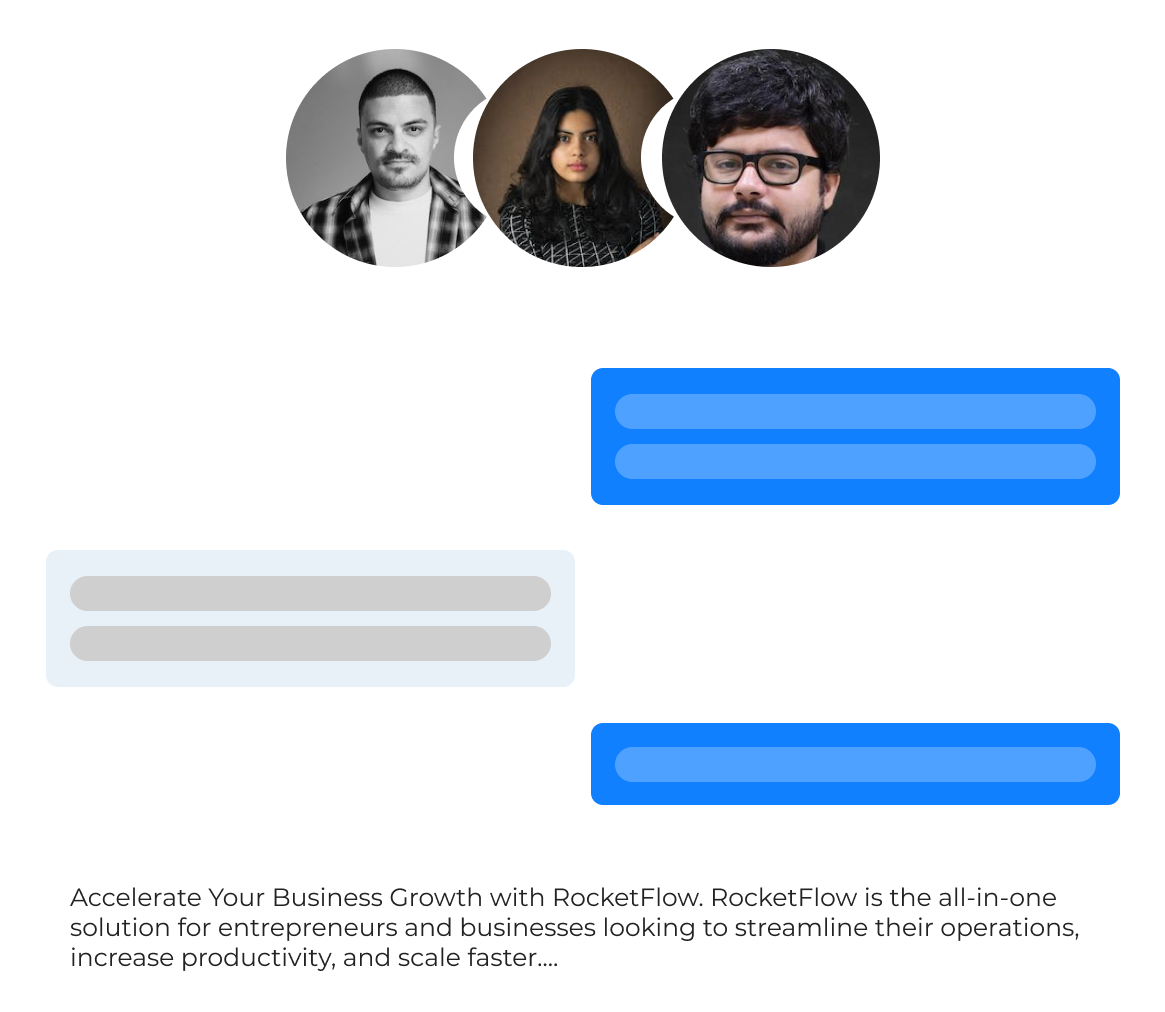Business Process Management
Business process management (BPM) is the discipline in which enterprises use various methods to discover, model, analyze, measure, improve, optimize and automate business processes. If we are able to define the gateways for data/process/business-stages/raw materials for entry/exit into the system, define conditions on basis of which stakeholders take decisions and further define business rules for reacting to events; we are managing business processes. In business process management, a sequence of work can vary from instance to instance and from business to business. The end goal of a business process management is Predictability; no matter how many turns and forks in the road, we know all of them in advance, and we understand the business conditions for the process to take one route or another. If this condition is met, we are dealing with a process.
Business process management (BPM) is how a company models its predictable processes for better efficiency and optimization.
Effective business process management practices can result in improved business agility, process visibility, organizational efficiency, customer service and product and service innovation.
For example, if the process for realizing a sales lead is clear and efficient, itâÃÂÃÂs much more likely the sales lead will be converted and delivered correctly the first time and the customer will be satisfied.
What are the different phases of an effective Business Process Management strategy?
The six phases of business process management are Assess, Design, Model, Implement, Monitor and Modify
- Assess:The goal of the assessment phase is to sketch the process flow in its current state and enable stakeholders to review the data. This should also include any errors and potential consequences to show business impact.
- Design:The design phase should be high iterative, as BPM practitioners use the collected data from the assessment phase to design solutions to process issues. A valuable design reduces problems in the process lifecycle and offers accuracy and efficiency. Presenting multiple designs to stakeholders to test them with data and weigh in on the best option is generally the most effective option. The general tendency is to use process maps to form ideas and designing solutions that reduce the number of problems over the lifecycle of the process.
- Model:In this phase, designs are tested with predictive data. BPM practitioners should ensure the accuracy of the data in order to obtain valid results. The goal of the modeling phase is to manipulate variables (such as time, cost and resources) to understand the outcomes.
- Implement:A significant amount of work goes into implementing changes that are designed and modeled. BPM practitioners must develop a detailed change management plan that outlines what specifically is changing. Keep in mind, this may include informing customers or suppliers, or updating systems. Prepare a contingency plan as well, as even the best ideas can falter during implementation.
- Monitor:BPM is intended to be an ongoing process, which means practitioners must continuously assess the process using data modeling and simulation to consider possible outcomes. They should also benchmark performance against several data points, including any key performance indicators (KPIs), employee feedback or overall objectives. For example, if a new processâÃÂàobjective was to deliver a product to the customer two days earlier, but employee feedback indicates achieving the goal requires substantial overtime, the process may need to be revisited.
- Modify:In the modify phase, the process should be continually adjusted based on data to improve outcomes. If changes are required, the business case should be revisited and the six-step phase cycle should begin again, starting with the assessment phase.
What are the benefits of Business Process Management?
BPM enables organizations to improve processes and drive better results, which can lead to lower costs, higher revenue and increased customer satisfaction. When a process is streamlined, it can more closely align with customer needs. In addition, the organization can better manage costs when BPM is running efficiently, supported with useful data and tracking toward clearly defined goals. Implementing a BPM strategy can enable:
- Teams to prioritize core business processes that will have the greatest impact on the business
- Better accountability with a clear owner and stakeholder defined
- Improved productivity
- Better compliance
- Increased revenue through higher customer satisfaction
- Lowered costs
- Better Accuracy
What are different types of Business Process Management?
Operations Extensive Business Process Management The BPM processes which involves operations and involvement of executives and logistics to fulfill a business requirement falls under this category. This type of business processes are heavily dependent on executives involved in the overall fulfillment for the approvals, performing actions and are ideal candidate for mapping in a Business Process Management Platform for efficient end to end execution. For example if a company is engaged in Buy/Sell of Cars, a process of handing over the cars that customers sell to Drivers for delivering to the hub could be an operations extensive business process. There are SOPs to be followed while handing over the cars which is a valuable asset and the similar SOPs has to be followed while drivers returns the cars in the hubs to the executives. How the Drivers use the car while doing this fulfillment has to be tracked, images of the car before pickup and after delivery has to be tracked in the system. The data has to be managed in the platform for processing reimbursements, managing expenses, internal audits etc. Rocketflow is an industry proven Business Process Management platform which can be leveraged for end to end automation of an Operations Extensive Business Process Management. Rocketflow can be used for use cases like Driver Management, Fleet Management, Logistics Management and End to end fulfillment journey automation.
Integration Extensive Business Process Management The BPM processes which involves integrations with software and hardware and have very less touch points for manual interventions falls under this category. This type of business processes if effectively managed through a right Business Process Management software can lead to an end to end automation where only outliers have to be manually triggered and has to be managed by manual interventions. Security and Surveillance industry uses CCTV Cameras, AI Predictions, IoT devices for detecting Motion, Fire, Gas and Tamper alarms which can be an ideal fit for Integration Extensive Business Process Management. The SOPs can be defined in the BPM Software which can be integrated with the hardware and software systems to perform certain SOPs as soon as the hardware or software triggers the events. Rocketflow is an industry proven Business Process Management platform well suited for end to end automation of Security and Surveillance related use cases. Rocketflow is pre integrated with CCTV Cameras OEMs like HikVision, Dahua, GVD NVRs and DVRs and pre integrated with Fire and Alarm systems like Texecom for two way communication. Rocketflow allows to map inventory across multiple geographies and map SOPs in case any adverse event triggers. There is a single dashboard which can be used by Command and Control center executives to perform the SOPs which are tracked for SLA and Compliance adherences. Rocketflow is a platform well suited for Intelligent Command and Control Center operations.
Document Extensive Business Process Management The BPM Processes which involves managing documents at the center of the business processes falls under this category. Typical example of Document extensive BPM processes could be a Financial process of managing reimbursements. The company may want to store the documents for reimbursements based on compliance requirements. The requestor has to have a provision for uploading the reimbursement related documents through the BPM Software and the Manager should be able to approve/reject or seek further information on the documents submitted. Various other stakeholders may be involved in fulfilling the workflow which verifies and process the workflows based on the uploaded document. Rocketflow is a matured BPM software which can help automate documents extensive business processes like HR related processes which otherwise requires lot of paperwork and manual forms to be maintained for candidate onboarding, exit, account opening, managing appraisals etc.
Is implementing BPM Software costly?
Yes, implementing BPM Software can sometimes gets extremely costly due to the following costs:
- License Cost of the BPM Software
- Technology Consultancy
- Functional Consultancy
- Total Cost of Implementation and Adoption
One of the preferred strategy used by new age organizations is to use a software like Rocketflow and automate few critical business processes using the Cloud SAAS offerings in a monthly subscription model based on number of users or tasks performed. Rocketflow provides a drag and drop visual workflow designer to map the business processes, provides dynamic form builder to capture data inputs at every business stage and allows stakeholders to perform actions based on events. This provides companies with a chance to get support and implementation done in no additional costs and later they can explore other options like on premise deployment and getting the end to end process automated. For custom integrations Rocketflow Technical team provides custom offerings. You can get in touch with Rocketflow Sales Team to explore the offerings.




 Real Estate
Real Estate
 Fleet
Fleet














































